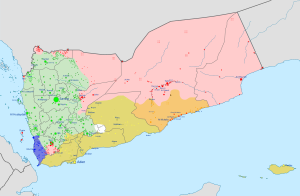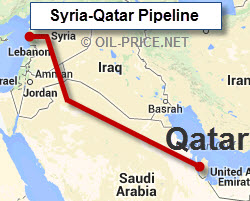Saudi Arabia is not out to get the Zaidis. In fact, it actively supported the Zaidi royal family in Yemen’s civil war in the 1960s. What the Kingdom has reacted to in Yemen is Iran’s cynical efforts to take advantage of Yemen’s internal conflict to build a military alliance with the Houthi rebels – an alliance with only one conceivable target: Saudi Arabia.
Yet when Saudi officials tried to warn the international community about Iran’s activities in Yemen, it was met with denial. Western commentators, in particular, have twisted themselves into knots to avoid recognizing any Iranian involvement in the conflict, even as evidence to the contrary has mounted.
In the last 18 months, the US Navy has intercepted four arms shipments from Iran to Yemen. Iran itself has claimed numerous times that it controls four Arab capitals, including Sana’a, and the Houthis have become closely tied with Hezbollah, Iran’s Lebanese political and military proxy.
By Ali Al Shihabi, The executive director of the Arabia Foundation, a new think tank that will focus on the geopolitics of the Arabian Peninsula. He is the author of The Saudi Kingdom: Between the Jihadi Hammer and the Iranian Anvil and Arabian War Games.

The bystanders look upon the ongoing war in Yemen as an unnecessary stupid conflict among Muslim states as it has caused over ten thousand deaths in the last two years and in which precious treasure is being frittered away not to save but kill more lives with sophisticated weaponry supplied by the most ‘civilised’ nations of the world. For the onlookers, the Yemen conflagration is nothing more than a saga of colossal human tragedy in which innocent people have been uprooted from their hearths, women widowed, children orphaned and food and medical supplies are becoming extinct, however, to the main players of this war i.e. Saudi Arabia, Iran and the US, their “national interest” is more important than human lives, particularly of Saudi Arabia, which looks upon any political crisis in Yemen as an existential threat to her territorial integrity. That is why Saudis will fight to the last man or till the time they successfully neutralise the existential threat.
What is this existential threat to Saudi Arabia? It is the region of Asir bordering Yemen that has been the Saudi underbelly because even before the formation of Kingdom of Saudi Arabia (KSA), the tribal Emir of Asir and the ruler of Yemen hobnobbed to resist the authority of King Abd al-Aziz. In mid-1920s, when the ruler of Yemen, Imam Yahya and his son Ahmad threatened the main centres of Asir, the Emir of Asir went running for help to Abd al-Aziz and consented to the establishment of Saudi protectorate over his state in 1926, however, when Abd al-Aziz reduced the Emir of Asir to a mere figurehead under a new treaty in 1930, the latter intrigued with Imam Yahya which crystallised in a revolt in 1932 against Abd al-Aziz that was successfully crushed by the Saudis, forcing the Emir of Asir to flee to the sanctuary of Yemen.
Before the “Asir headache” could turn into a “migraine,” the Saudi King Faisal tried to settle the issue, once and for all, when the Treaty of Taif was due for renewal in 1974. He told the Yemeni leadership that though the treaty recognised Saudi sovereignty over over Asir, Najran and Jizan, it was essential that the existing border was recognised as final and permanent
The crisis lingered on because Imam Yahya was in possession of territories of Najran, Harad and a part of Asir-Tihama which the Saudi king regarded as his own and for which he eventually went to war with Yemen, that too, resulted in Saudi victory under the Treaty of Taif in 1934 in which Yemen ceded the disputed territories to Saudi Arabia. Prince (later King) Faisal who headed the Saudi military campaign wanted to conquer the whole of Yemen but his father King Abd al-Aziz ordered him to withdraw. Faisal was flabbergasted and questioned the sagacity of theorder, to which the King replied, “Yemen is not a country that can easily be conquered… If conquering Yemen were a simple undertaking that guaranteed success, Britain, which is stronger than us, in pursuit of its selfish interests, would have tried to conquer Yemen. You should be convinced by the fact that it did not do this.” The Yemenis could not forget the wounds of defeat and the very next year, during the course of Hajj, three of their pilgrims tried to stab Abd al-Aziz, who was saved by his sonEmir Saud.
The Treaty of Taif which had to be renewed after every twenty years stipulated “a state of perpetual peace, firm friendship and everlasting Islamic Arab brotherhood” between the two states and the relationship actually blossomed for many years only to be broken in 1948 by a coup in Yemen in which the coup makers killed the Yemeni ruler Imam Yahya, his prime minister, several dignitaries and promised to usher in a constitutional government which was anathema to the Saudi monarch, who, despite his aversion to Imam Ahmad, the successor of the dead Imam Yahya, supported his claim to the headship of Yemen and helped him to recapture Sanaa to establish his authority and ensured that the coup makers were publicly executed.
After a peaceful stint of fourteen years, there was yet another coup in Yemen in September 1962. Abdallah al-Sallal, the leader of the coup makers was an army officer, who was a republican nationalist by political conviction as well as a strong admirer of the Egyptian President Gamal Abdel Nasser, who was leading the popular pan-Arab wave in the Middle East. The successful coup turned out to be a big headache for the Saudi king because the Yemeni republicans demanded that the Saudi province of Asir be returned to Yemen as it had been forcibly snatched from them by Al-Saud in the 1930s. This claim was anexistential threat to the territorial integrity of Saudi Arabia and so it had to fight a costly protracted war in Yemen for about six years to nullify the Yemini claims against Saudi Arabia.
Before the “Asir headache” could turn into a “migraine,” the Saudi King Faisal tried to settle the issue, once and for all, when the Treaty of Taif was due for renewal in 1974. He told the Yemeni leadership that though the treaty recognised Saudi sovereignty over over Asir, Najran and Jizan, it was essential that the existing border was recognised as final and permanent. Consequently, on 17 March 1973, a joint Saudi-Yemeni communique was issued to this effect but there was a severe backlash against it from the Yemeni nationalists as well as the angry Yemeni students, who seized the Yemeni embassy in Cairo. It was due to such Yemeni claims on Asir in the past and possibly in future that the Saudis built the first modern military base for their defence forces in 1971 at Khamis Mushayt which is close to the Yemeni border.
The ongoing war in Yemen can bring such people in power, who can again stake claims on the Saudi territories bordering Yemen. Saudi Arabia does not want such a situation to arise again and that is why it has gone full throttle in Yemen and is likely to remain engaged till a friendly government is ensconced in power.
Till the last man in Yemen
By Basharat Hussain Qizilbash, www.pakistantoday.com.pk
Saudi Arabian-led intervention in Yemen - Wikipedia
A military intervention was launched by Saudi Arabia in 2015, leading a coalition of nine .... A conflictover a draft constitution resulted in the Houthis consolidating control over the Yemeni capital in January 2015. After resigning from his post ...
Yemeni Civil War (2015–present) - Wikipedia
Middle East Conflict: Why Is Saudi Arabia Attacking Yemen? Important ...
Why Saudi Arabia is Hammering Yemen | The National Interest
Why Saudi Arabia Is Continuing Its War In Yemen | HuffPost
Why is Saudi Arabia at War in Yemen? by Ali Al Shihabi - Project ...
~ ~ ~ ~ ~ ~ ~ ~~ ~ ~ ~ ~ ~ ~ ~ ~ ~
Humanity, Knowledge, Religion, Culture, Tolerance, Peace
Join Millions of visitors: لاکھوں وزٹرز میں شامل ہوں
Twitter: @AftabKhanNet















